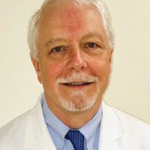
Agenturfotografin / shutterstock.com
Telerheumatology—which refers to the application of electronic communication technology to clinical encounters from a distance between rheumatologists and their patients—has the potential to extend a workforce projected to experience significant shortfalls, making it more accessible to more patients. Multiple barriers that stood in the way of taking full advantage of this promise are now down—at least temporarily—due to the demands of treating patients during the COVID-19 pandemic and the need to minimize personal contact during social distancing.
Pre-COVID-19
For the past nine years, Michael Rezaian, MD, a rheumatologist in independent practice at the Rural Outreach Arthritis Center, Martinsburg, W.Va., and his partner have provided specialist rheumatology consultations for a charity hospital in northeastern Iran that serves refugees from the war in neighboring Afghanistan. They also consult remotely on patients in Kathmandu, Nepal, and in Danlí, Honduras. Their experience with more than 4,800 patients in Iran over five years for remote evaluation and treatment of rheumatologic and musculoskeletal diseases is described in a study published online in 2019 in Telemedicine and eHealth.1
Telemedicine can make a big difference for patients with inflammatory, rheumatoid and psoriatic arthritis, Dr. Rezaian says. He also sees a fair number of children with juvenile idiopathic arthritis. “We use Skype primarily. It’s secure and private, and when the bandwidth decreases, you don’t get a pause in the signal, as sometimes happens with FaceTime.”

Dr. Rezaian
But he had not offered the same kind of remote service in rural West Virginia, where his clinic practice is located, because his malpractice insurance provider told him it would not cover it. “It used to be the equipment was the biggest barrier, but then Skype and smartphones came along,” Dr. Rezaian says. “Now, malpractice is our biggest impediment—although we have shown that telerheumatology can be done for many patients I have never seen in person.”
Editor’s note: As this article was going to press, Dr. Rezaian heard from his malpractice insurance carrier that it would be willing to start covering him for providing telemedicine services to patients in the U.S. In the midst of shelter-in-place orders, he reports that, except for emergencies, he is now doing telemedicine only, which is going well.
Dr. Rezaian sees international patients remotely three days a week, providing second opinions for those who have been told they need surgery. “They bring their MRI [magnetic resonance imaging] or X-ray results, and we are able to offer an opinion on whether surgery is really needed.” A general practice physician and nurse on the ground at the charity hospital help facilitate these encounters.
Dr. Rezaian provides this service free of charge. “It’s a good Samaritan thing, and very rewarding to me personally,” he explains. The service also incorporates medical residents from West Virginia University, Morgantown, who rotate through his clinic. When the service started, Dr. Rezaian visited Iran three times a year for a week at a time to support the local doctors and provide in-person patient visits, but he has since cut back on the travel.
“With high-definition images I can see the patients clearly. Sometimes we might ask the physician on the ground to put the patient through range-of-motion exercises. We ask a lot of questions and then try to figure out the best plan for their care,” he says. Diagnostic tests conducted on these patients include serologic tests, radiographs, MRI and bone densitometry. “Obviously, we can’t do injections remotely, but during our in-person visits we trained the local doctors to do [injections].”
What Is Telerheumatology?

Dr. Pearson
Telemedicine means clinical delivery of medical care from a distance—aided and supported through technology.
Prior to the COVID crisis, Medicare coverage of medical visits done via telemedicine was limited to specific circumstances, such as patients living in rural areas. But in March, the Centers for Medicare & Medicaid Services (CMS) issued a set of Medicare 1135 waivers that relaxed restrictions and broadened access to telehealth services and coverage for visits, whether office, hospital or other visits, including over the telephone. These include virtual check-in services between a patient and doctor by audio or video devices, whether a new or established patient, and remote patient monitoring. The waiver also allows previously unapproved communication technologies, such as FaceTime or Skype.
“Medicare beneficiaries across the nation, no matter where they live, will be able to receive a wide range of services via telehealth without ever having to leave home,” CMS Administrator Selma Veera announced during a White House briefing on March 17. How this flexibility is being used by rheumatologists at this time and whether former telemedicine policies will be restored or revised after the crisis is lifted remain unknown.

Dr. Albert conducts a telerheumatology with an assist from his “esteemed colleague,” Zeus.
But at this time, the CMS will reimburse synchronous telemedicine visits at the same fee-for-service rate as regular, face-to-face evaluation and management visits, using the regular evaluation and management codes for new patient visits (99201–99205), established patient visits (99212–99215) and consultations (99241–99245). Telephone assessment and management services by all qualified healthcare professionals can be billed for times of 11–20 minutes or 21–30 minutes, using codes 98967 or 98969, respectively. Virtual check-ins and e-visits have their own codes. For more information, see the ACR’s Telehealth Provider Fact Sheet.
The spectrum of healthcare provided with telemedicine is broader than many people realize, says Duane Pearson, MD, of the Rheumatology Clinic, University of Colorado School of Medicine, Aurora. “There are a lot of opportunities to meet patients where they need us, if we can leverage the available modalities and work to dismantle the barriers.”
Telemedicine can be used to diagnose rheumatic conditions, manage disease and provide necessary follow-up. The provider can establish a relationship with the patient and then triage services based on disease severity and complexity. For rheumatologists, conditions to target with telemedicine include osteoporosis, polymyositis, Sjögren’s syndrome, scleroderma, vasculitis and lupus—although lupus can be harder to diagnose remotely.
The program at the University of Colorado has followed the lead of Dartmouth-Hitchcock Medical Center’s Connected Care and Center for TeleHealth, based in Hanover, N.H., which offers rheumatology appointments via telemedicine for evaluations, follow-up exams and recommendations of relevant therapies using live two-way secure video on large-format, high-definition mobile carts. Dartmouth-Hitchcock rheumatologist Daniel Albert, MD, and colleagues mix periodic in-person visits to smaller hospitals with telemedicine.2
“Like any technology, telemedicine has lots of ramifications. The barriers are real, but slowly going away,” Dr. Albert says. “I believe [the use of] telerheumatology will grow.”
The COVID-19 pandemic is accelerating the pace of that change.
Dr. Pearson’s program in Colorado uses a similar model, partnering with rural and safety net hospitals to provide episodic, on-site rheumatology care and telemedicine for ongoing follow-up to clinics up to 300 miles away as part of a pre-appointment consult triage system to identify patients who require timely evaluation and treatment.3 It also participates in Project ECHO, developed in New Mexico, an innovative program that connects community providers with specialists, including rheumatologists, at centers of excellence through real-time video encounters.4 Sessions using case-based learning and mentorship help local healthcare providers gain the expertise needed to provide services and facilitate patient transitions in and out of specialist care.
Some rheumatologists are comfortable providing services remotely via telemedicine, and just as many voice concerns about not seeing their patients in person, Dr. Pearson says. “A hybrid model like ours can address both concerns, and by focusing on the sickest patients who require active ongoing management, it makes more efficient use of scarce specialist resources. By leveraging the full spectrum of tele/remote care, including direct video encounters, e-consults and ECHO, we have the best opportunity to provide rural providers and patients the care they need.”
Research has documented the ability of telemedicine-based encounters to identify rheumatic diagnoses that are later confirmed by in-person visits.5
Dr. Pearson believes lack of coverage by insurers will become less of a drawback as leading managed care plans engage with and pay for telemedicine. Turning back the clock after the pandemic is controlled may prove difficult.
Other barriers are regulatory, such as the challenge of interstate regulations. Dr. Pearson says, “For every hospital we work with, we have to be credentialed, and then recredentialed every two years, although Colorado’s standardized credentialing process makes this less of a burden.”
Editor’s note: Many of these barriers have, at least temporarily, been lifted to ease the medical burden during the COVID-19 pandemic. See the Legal Update column from our April issue and the ACR’s guidance for rheumatologists providing telemedicine during this national emergency.
A Crucial Need

Dr. Battafarano
Daniel Battafarano, DO, MACP, professor of medicine at the Uniformed Services University College of Allied Health Sciences, San Antonio, Texas, recently retired as division/program director of rheumatology at San Antonio Military Medical Center, which offers asynchronous telemedicine consults globally. As the primary author of the ACR’s 2015 Workforce Study projecting a looming shortage of rheumatologists in America, his perspective, from a workforce standpoint, is that patient care needs will drive the determination of who needs timely access to rheumatologic specialists and who does not.
Federal and state regulations, reimbursement policies, and the need to be credentialed at multiple hospitals and to carry multiple state licensures are all limiting telemedicine. COVID-19 is changing this landscape—at least in the short term—but doctors aren’t going to engage with telemedicine if it is too difficult to implement.
Dr. Battafarano describes three main applications of telemedicine in rheumatology. First is synchronous connection between a patient, a remote provider and a rheumatologist on a computer monitor or smartphone. Asynchronous communication is when a frontline provider uploads an electronic consultation, possibly with images, to which the rheumatologist can respond according to their own schedule, offering feedback and advice. The third application, he says, is reviewing electronic consult requests for triage: Will this patient benefit from a consultation with a rheumatologist?
All three applications are important in the context of the expected shortage of rheumatologists. “When I talk about the goals of telemedicine, whatever the specialty, we want the right patient seen by the right specialist at the right time in the right setting. If the patient’s history and other data are reliable, you can render a reliable opinion remotely and avoid unnecessary patient travel cost, childcare coverage and/or lost wages,” Dr. Battafarano says.
The Promise Is There

Dr. McCormick
Talbot “Mac” McCormick, MD, president and CEO of Eagle Telemedicine, Atlanta, also sees great potential for telerheumatology. Eagle is a 10-year-old, multi-
specialty practice with doctors in a dozen specialties who work remotely to provide specialist expertise to 160 to 170 contracting hospitals, typically smaller and/or rural. “We now have rheumatologists on our team and we have spoken with several hospitals and health systems over the last couple of years about their patients who now drive hours to see a rheumatologist or else spend months on a waiting list,” Dr. McCormick says.
“Our business model across platforms is that we partner with a hospital, health system or medical practice for the cost of our services and medical expertise,” Dr. McCormick says. The health system pays Eagle, which assigns it the right to bill for professional services from those encounters. Eagle hopes to launch telerheumatology later this year—subject to systemic barriers.
“In the grand scheme of things, telemedicine offers patient satisfaction, quality, patient outcomes—all the things we do that have value for the system,” Dr. McCormick says. “We’re trying to get people to think about that value equation.
“There are qualified rheumatologists interested in and capable of bringing their expertise to patients remotely,” says Dr. McCormick. Obstacles include licensure and the need to be licensed in the state where you practice, as well as the state where the patient is, although malpractice coverage has not been a barrier for Eagle. “We still find that connectivity can be a challenge, such as the lack of reliable access to broadband services.”
Cultural barriers, operational flow issues and some complexities unique to rheumatologists also exist. But Dr. McCormick doesn’t think these are insurmountable.
In rural West Virginia it can be hard for patients to visit the doctor’s office, says Dr. Rezaian. “They need someone to bring them in, and they may have to drive two hours or more to get to the clinic, which takes a toll. We could have seen them remotely to review their medications and provide pretty much the same services, while maybe seeing them in person once or twice a year,” he adds.
‘We have shown that telerheumatology can be done for many patients who I have never seen in person.’ —Dr. Rezaian
“I think [telerheumatology is] the wave of the future,” he adds. “At some point it’s going to explode. The whole point of our study was to show that it’s doable, even in northeastern Iran.”
Dr. Rezaian recommends keeping the technology simple and the costs down. “I could have gotten fancy video equipment and software, but the new iPhone has a good camera that’s sufficient for most of our purposes. A lot of patients I talk to are very open to the idea—especially when the alternative is to have to come to my office in person.”
Larry Beresford is a medical journalist in Oakland, Calif.
References
- Rezaian MM, Brent LH, Roshani S, et al. Rheumatology care using telemedicine. Telemed J E Health. 2020 Mar;26(3):335–340.
- Kulcsar Z, Albert DA, Ercolano E. Telerheumatology: A technology appropriate for virtually all. Semin Arthritis Rheum. 2016 Dec;46(3):380–385.
- West SG, Pearson DW, Striebich CC, et al. The effect of pre‐appointment consultation triage on patient selection and revenue generation in a university rheumatology practice. Arthritis Care Res (Hoboken). 2019 May;71(5):689–693.
- Bankhurst A, Olivas C, Larson JH, et al. Rheumatology care in under‐resourced areas utilizing the ECHO model. Arthritis Care Res (Hoboken). 2019 Mar 30 [online ahead of print].
- Nguyen-Oghalai TU, Hunter K, Lyon M. Telerheumatology: The VA experience. South Med J. 2018 Jun;111(6):359–362.



